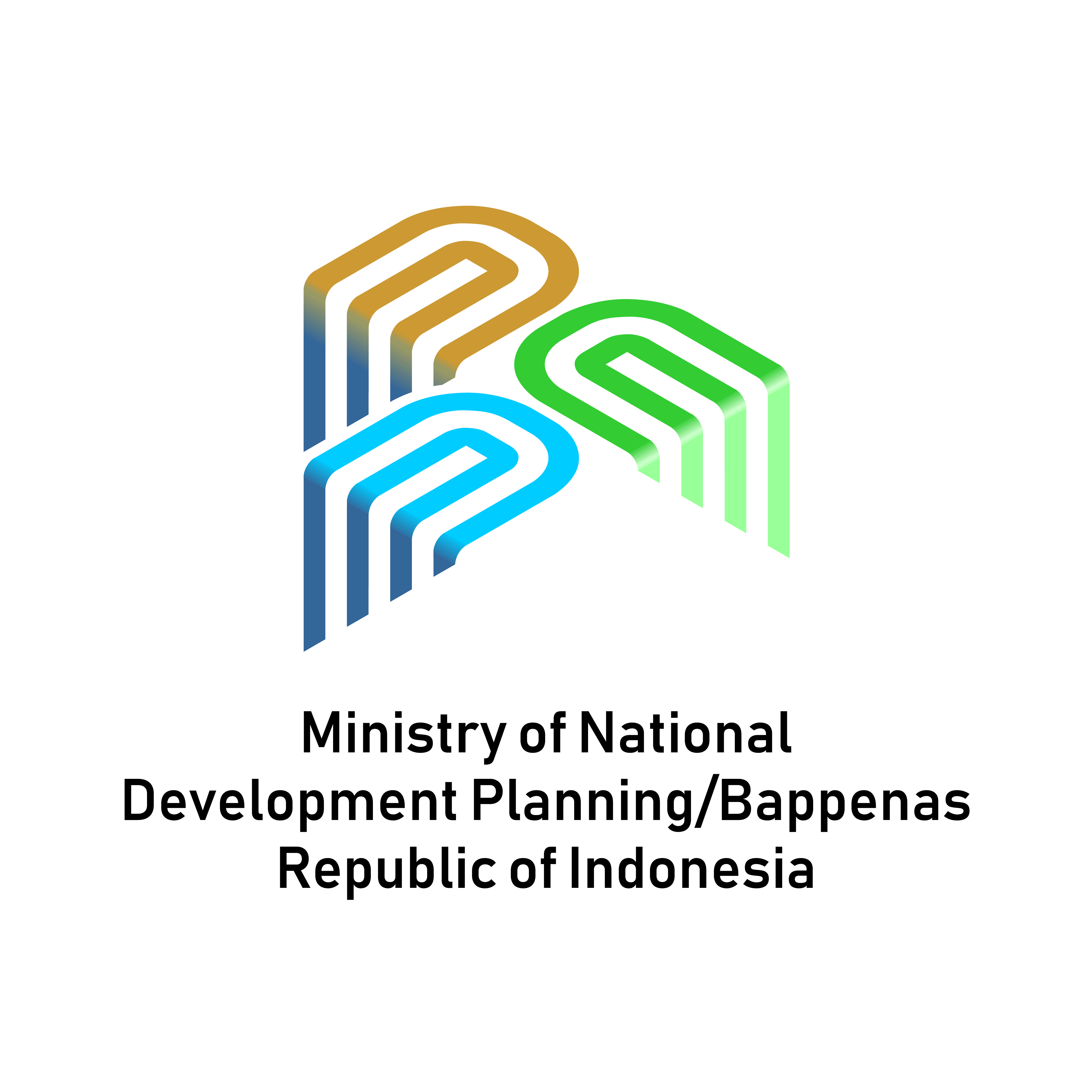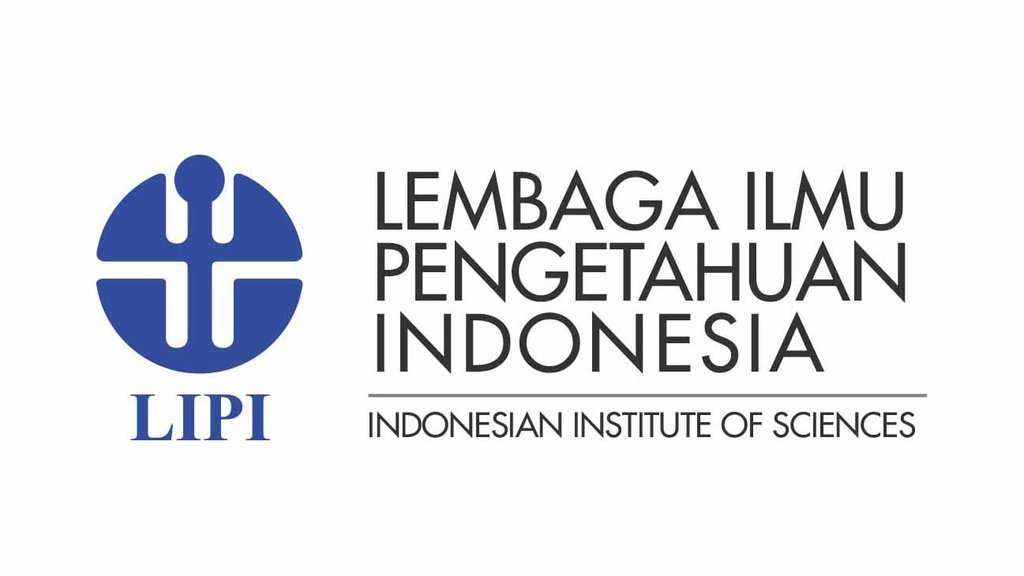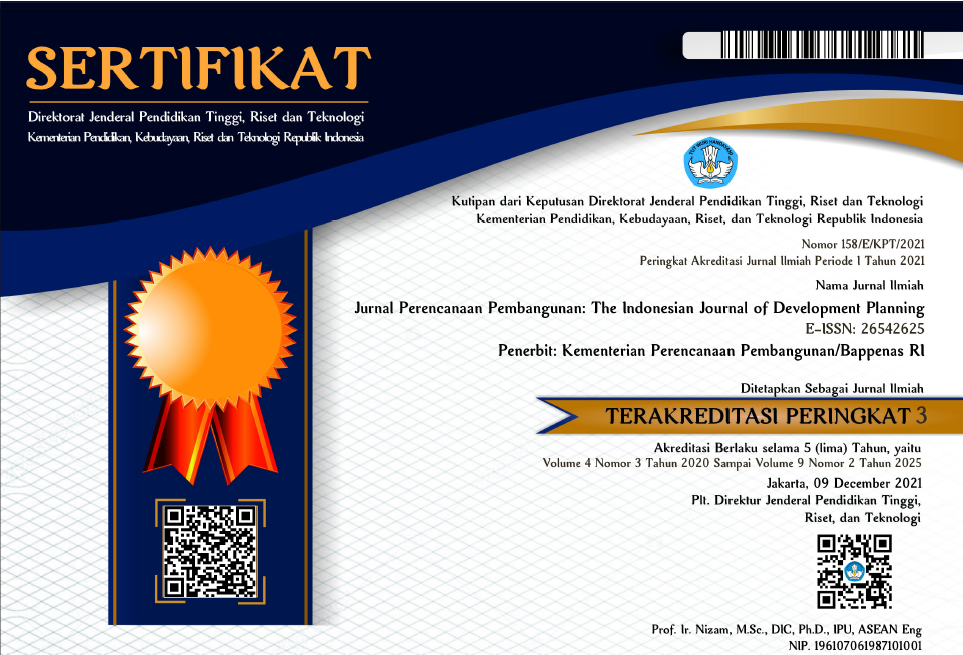Neither the Cohabitation of the Father nor the Grandmother Can Help Exclusive Breastfeeding in Indonesia: Empirical Research Using SUSENAS 2019 and 2020
DOI:
https://doi.org/10.36574/jpp.v6i1.235Keywords:
exclusive breastfeeding, probit, source of supportAbstract
Exclusive breastfeeding (EBF) for the first six months is the key to preventing malnutrition in children. However, EBF coverage in Indonesia is only 38%, while the target WHO set in 2030 is 70%. Therefore, targeting the actors behind EBF completeness is needed to boost the EBF rate. The research will uncover the impact of the daily sources of support (both maternal and paternal grandmothers, the father, and the domestic worker) and modifying factors on the EBF choices made by the mother. Using the 2019 and 2020 National Socio-Economic Survey (SUSENAS) data, probit regression suggests that no one's cohabitation with the mother significantly affects EBF completeness. In contrast, maternal characteristics (employment status, economic level, education completion, and residential area of living), baby’s gender, and father’s education become the most decisive factors. Since the leading actor is still the mother herself, to improve the EBF rate, the policy should be focused on helping breastfeeding mothers to face the challenges, especially in the workplace.
Downloads
References
Beasley, N. M. R., Hall, A., Tomkins, A. M., Donnelly, C., Ntimbwa, P., Kivuga, J., Kihamia, C. M., Lorri, W., & Bundy, D. A. P. (2000). The health of enrolled and non enrolled children of school age in Tanga, Tanzania. Acta Tropica, 76(2000), 223–229. https://doi.org/10.1016/S0001-706X(00)00101-7
Becker, G. (1981). A Treatise on the Family. National Bureau of Economic Research, Inc. https://econpapers.repec.org/RePEc:nbr:nberbk:beck81-1
Behzadifar, M., Saki, M., Behzadifar, M., Mardani, M., Yari, F., Ebrahimzadeh, F., Majidi Mehr, H., Abdi Bastami, S., & Bragazzi, N. L. (2019). Prevalence of exclusive breastfeeding practice in the first six months of life and its determinants in Iran: A systematic review and meta-analysis. BMC Pediatrics, 19(1), 1–10. https://doi.org/10.1186/s12887-019-1776-0
BKKBN. (2018). Indonesia demographic and health survey 2017.
Black, R. E., Allen, L. H., Bhutta, Z. A., Caulfield, L. E., de Onis, M., Ezzati, M., Mathers, C., & Rivera, J. (2008). Maternal and child undernutrition: global and regional exposures and health consequences. The Lancet, 371(9608), 243–260. https://doi.org/10.1016/S0140-6736(07)61690-0
Bonet, M., Marchand, L., Kaminski, M., Fohran, A., Betoko, A., Charles, M. A., & Blondel, B. (2013). Breastfeeding duration, social and occupational characteristics of mothers in the French "EDEN mother-child" cohort. Maternal and Child Health Journal. https://doi.org/10.1007/s10995-012-1053-4
Buccini, G. D. S., Beni´cio, M. H. D. A., & Venancio, S. I. (2014). Determinants of using pacifier and bottle feeding. Revista de Saude Publica, 48(4), 571–582. https://doi.org/10.1590/S0034-8910.2014048005128
Butte, N. F., & King, J. C. (2005). Energy requirements during pregnancy and lactation. Public Health Nutrition, 8(7a), 1010–1027. https://doi.org/10.1079/phn2005793
Choudhury, N., Moran, A. C., Alam, M. A., Ahsan, K. Z., Rashid, S. F., & Streatfield, P. K. (2012). Beliefs and practices during pregnancy and childbirth in urban slums of Dhaka, Bangladesh. BMC Public Health, 12(1). https://doi.org/10.1186/1471-2458-12-791
Crippa, B. L., Consales, A., Morniroli, D., Lunetto, F., Bettinelli, M. E., Sannino, P., Rampini, S., Zanotta, L., Marchisio, P., Plevani, L., Giannì, M. L., Mosca, F., & Colombo, L. (2021). From dyad to triad: a survey on fathers' knowledge and attitudes toward breastfeeding. European Journal of Pediatrics. https://doi.org/10.1007/s00431-021-04034-x
Crosby, R. A., Salazar, L. F., & Diclemente, R. J. (2018). Health Behavior Theory for Public Health. In Health Behavior Theory for Public Health.
Debnath, F., Mondal, N., Deb, A. K., Chakraborty, D., Chakraborty, S., & Dutta, S. (2021). Determinants of optimum exclusive breastfeeding duration in rural India: a mixed method approach using cohort and content analysis design. International Breastfeeding Journal, 16(1), 1–7. https://doi.org/10.1186/s13006-021-00359-3
Dennis, C. L. (2002). Breastfeeding initiation and duration: a 1990-2000 literature review. Journal of Obstetric, Gynecologic, and Neonatal Nursing?: JOGNN / NAACOG, 31(1), 12–32. https://doi.org/10.1111/j.1552-6909.2002.tb00019.x
Ekström, A., Widström, A. M., & Nissen, E. (2003). Breastfeeding Support from Partners and Grandmothers: Perceptions of Swedish Women. Birth, 30(4), 261–266. https://doi.org/10.1046/j.1523-536X.2003.00256.x
Emmott, E. H., & Mace, R. (2015). Practical support from fathers and grandmothers is associated with lower levels of breastfeeding in the UK millennium cohort study. PLoS ONE, 10(7), 1–12. https://doi.org/10.1371/journal.pone.0133547
Flaherman, V. J., Chan, S., Desai, R., Agung, F. H., Hartati, H., & Yelda, F. (2018). Barriers to exclusive breast-feeding in Indonesian hospitals: A qualitative study of early infant feeding practices. Public Health Nutrition, 21(14), 2689–2697. https://doi.org/10.1017/S1368980018001453
Ghosh, R., Mascie-Taylor, N., & Rosetta, L. (2006). Longitudinal study of the frequency and duration of breastfeeding in rural Bangladeshi women. American Journal of Human Biology, 18(5), 630–638. https://doi.org/10.1002/ajhb.20533
Glanz, K., Rimer, B. k., & Viswanath, K. (2008). Health Behavior and Health Education Theory, Research and Practice.
Gupta, M. L., Aborigo, R. A., Adongo, P. B., Rominski, S., Hodgson, A., Engmann, C. M., & Moyer, C. A. (2015). Grandmothers as gatekeepers? The role of grandmothers in influencing health-seeking for mothers and newborns in rural northern Ghana. Global Public Health, 10(9), 1078–1091. https://doi.org/10.1080/17441692.2014.1002413
Hayden, J. (2019). Introduction to Health Behavior Theory. In Introduction to Health Behavior Theory (Vol. 3). Jones & Bartlett Learning.
IDAI. (2013). Breastfeeding Success At Work. https://www.idai.or.id/artikel/klinik/asi/sukses-menyusui-saat-bekerja-2
Janz, N., & Becker, M. H. (1984). The Health Belief Model. A decade later. 1984; 11 (1): 1-47. Health Education Quarterly, 11(1), 1–47.
Jones, G., Steketee, R. W., Black, R. E., Bhutta, Z. A., Morris, S. S., Child, B., & Group, S. S. (2003). The Lancet CHILD SURVIVAL II How many child deaths can we prevent this year? Child survival II. The Lancet, 362(July 5), 65–71.
Joseph, F. I., & Earland, J. (2019). A qualitative exploration of the sociocultural determinants of exclusive breastfeeding practices among rural mothers, North West Nigeria. International Breastfeeding Journal, 14(1), 1–11. https://doi.org/10.1186/s13006-019-0231-z
Kohlhuber, M., Rebhan, B., Schwegler, U., Koletzko, B., & Fromme, H. (2008). Breastfeeding rates and duration in Germany: A Bavarian cohort study. British Journal of Nutrition, 99(5), 1127–1132. https://doi.org/10.1017/S0007114508864835
Ku, C. M., & Chow, S. K. Y. (2010). Factors influencing the practice of exclusive breastfeeding among Hong Kong Chinese women: A questionnaire survey. Journal of Clinical Nursing, 19(17–18), 2434–2445. https://doi.org/10.1111/j.1365-2702.2010.03302.x
Li, J., Kendall, G. E., Henderson, S., Downie, J., Landsborough, L., & Oddy, W. H. (2008). Maternal psychosocial well-being in pregnancy and breastfeeding duration. Acta Paediatrica, International Journal of Paediatrics. https://doi.org/10.1111/j.1651-2227.2007.00602.x
Li, Y., Kong, L., Hotta, M., Wongkhomthong, S. A., & Ushijima, H. (1999). Breast-feeding in Bangkok, Thailand: Current status, maternal knowledge, attitude and social support. Pediatrics International, 41(6), 648–654. https://doi.org/10.1046/j.1442-200X.1999.01149.x
Lisnawati, N., Rahayuning Pangestuti, D., & Zahroh, W. (2020). The effect of gender on the exclusive breastfeeding practices in the first month of life. E3S Web of Conferences, 202. https://doi.org/10.1051/e3sconf/202020212021
Martorell, R., Khan, L. K., & Schroeder, D. G. (1994). Reversibility of stunting: Epidemiological findings in children from developing countries. European Journal of Clinical Nutrition.
Meedya, S., Fahy, K., & Kable, A. (2010). Factors that positively influence breastfeeding duration to 6 months: A literature review. In Women and Birth. https://doi.org/10.1016/j.wombi.2010.02.002
Mohd Shukri, N. H., Wells, J., & Fewtrell, M. (2021). Differences in maternal characteristics and their associations with breastfeeding attitudes among primiparous mothers. Midwifery, 95(January). https://doi.org/10.1016/j.midw.2021.102931
Moyo, G. T., Magaisa, T., Pagiwa, A., Kandawasvika, R., Nyanga, L., Gomora, Z., & Oldewage-Theron, W. (2020). Barriers and facilitators of exclusive breastfeeding: Findings from a Barrier Analysis Conducted in Mwenezi and Chiredzi Districts, Zimbabwe. World Nutrition, 11(3), 12–21. https://doi.org/10.26596/wn.202011312-21
National Population and Family Planning Board. (2018). Survei Demografi dan Kesehatan Indonesia 2017.
Negin, J., Coffman, J., Vizintin, P., & Raynes-Greenow, C. (2016). The influence of grandmothers on breastfeeding rates: A systematic review. BMC Pregnancy and Childbirth, 16(1). https://doi.org/10.1186/s12884-016-0880-5
Neves, P. A. R., Barros, A. J. D., Gatica-Domínguez, G., Vaz, J. S., Baker, P., & Lutter, C. K. (2021). Maternal education and equity in breastfeeding: trends and patterns in 81 low- and middle-income countries between 2000 and 2019. International Journal for Equity in Health, 20(1), 1–13. https://doi.org/10.1186/s12939-020-01357-3
Ogunlesi, T. A. (2010). Maternal socio-demographic factors influencing the initiation and exclusivity of breastfeeding in a Nigerian semi-urban setting. Maternal and Child Health Journal, 14(3), 459–465. https://doi.org/10.1007/s10995-008-0440-3
Pollitt, E., Gorman, K. S., Engle, P. L., Rivera, J. A., & Martorell, R. (1995). Nutrition in Early Life and the Fulfillment of Intellectual Potential. The Journal of Nutrition, 125(suppl_4), 1111S-1118S. https://doi.org/10.1093/jn/125.suppl_4.1111S
Putri, T. E., & Handayani, D. (2019). Child health investment on early age marriage mother in rural Indonesia. Proceedings of the 33rd International Business Information Management Association Conference, IBIMA 2019: Education Excellence and Innovation Management through Vision 2020, 8138–8144.
Qiu, L., Zhao, Y., Binns, C. W., Lee, A. H., & Xie, X. (2008). A cohort study of infant feeding practices in city, suburban and rural areas in Zhejiang Province, PR China. International Breastfeeding Journal, 3, 1–8. https://doi.org/10.1186/1746-4358-3-4
Rogers, I. S., Emmett, P. M., & Golding, J. (1997). The incidence and duration of breast feeding. Early Human Development, 49(SUPPL.). https://doi.org/10.1016/S0378-3782(97)00053-4
Rollins, N. C., Bhandari, N., Hajeebhoy, N., Horton, S., Lutter, C. K., Martines, J. C., Piwoz, E. G., Richter, L. M., & Victora, C. G. (2016). Why invest, and what it will take to improve breastfeeding practices? The Lancet, 387(10017), 491–504. https://doi.org/10.1016/S0140-6736(15)01044-2
Rosenstock, I. M. (1974). Historical Origins of the Health Belief Model. Health Education & Behavior, 2(4), 328–335. https://doi.org/10.1177/109019817400200403
Ryan, A. S., Wenjun, Z., & Acosta, A. (2002). Breastfeeding continues to increase into the new millennium. Pediatrics, 110(6 I), 1103–1109. https://doi.org/10.1542/peds.110.6.1103
Santo, L. C. D. E., De Oliveira, L. D., & Giugliani, E. R. J. (2007). Factors associated with low incidence of exclusive breastfeeding for the first 6 months. Birth, 34(3), 212–219. https://doi.org/10.1111/j.1523-536X.2007.00173.x
Senarath, U., Dibley, M. J., & Agho, K. E. (2010). Factors associated with nonexclusive breastfeeding in 5 east and Southeast Asian countries: A multilevel analysis. Journal of Human Lactation, 26(3), 248–257. https://doi.org/10.1177/0890334409357562
Shirima, R., Greiner, T., Kylberg, E., & Gebre-Medhin, M. (2001). Exclusive breast-feeding is rarely practised in rural and urban Morogoro, Tanzania. Public Health Nutrition, 4(2), 147–154. https://doi.org/10.1079/phn200057
Sikorski, J., & Renfrew M, J. (2000). Support for breastfeeding mothers. Cochrane Database of Systematic Reviews (Online), 2.
Susin, L. R. O., Giugliani, E. R. J., & Kummer, S. C. (2005). Influence of grandmothers on breastfeeding practices. Revista de Saude Publica, 39(2), 141–147. https://doi.org/10.1590/s0034-89102005000200001
Thu, H. N., Eriksson, B., Khanh, T. T., Petzold, M., Bondjers, G., Kim, C. N. T., Thanh, L. N., & Ascher, H. (2012). Breastfeeding practices in urban and rural Vietnam. BMC Public Health, 12(1). https://doi.org/10.1186/1471-2458-12-964
Thulier, D., & Mercer, J. (2009). Variables associated with breastfeeding duration. In JOGNN - Journal of Obstetric, Gynecologic, and Neonatal Nursing. https://doi.org/10.1111/j.1552-6909.2009.01021.x
Titaley, C. R., Dibley, M. J., Ariawan, I., Mu’asyaroh, A., Alam, A., Damayanti, R., Do, T. T., Ferguson, E., Htet, K., Li, M., Sutrisna, A., & Fahmida, U. (2021). Determinants of low breastfeeding self-efficacy amongst mothers of children aged less than six months: results from the BADUTA study in East Java, Indonesia. International Breastfeeding Journal, 16(1), 1–15. https://doi.org/10.1186/s13006-021-00357-5
Umami, A. R., Ratnasari, V., & Zain, I. (2018). Semiparametric Bivariate Probit Model in Data Working Mother Status and Exclusive Breastfeeding. Journal of Physics: Conference Series, 1097(1). https://doi.org/10.1088/1742-6596/1097/1/012071
UNICEF &WHO. (2019). Increasing Commitment To Breastfeeding Through Funding and Improved Policies and Programmes. Global Breastfeeding Collective, 3, 1–4. https://www.who.int/nutrition/publications/infantfeeding/global-bf-scorecard-2019/en/
United Nation. (2015). Transforming our world: the 2030 Agenda for Sustainable Development. https://doi.org/10.1163/157180910X12665776638740
Victora, C. G., Bahl, R., Barros, A. J. D., França, G. V. A., Horton, S., Krasevec, J., Murch, S., Sankar, M. J., Walker, N., Rollins, N. C., Allen, K., Dharmage, S., Lodge, C., Peres, K. G., Bhandari, N., Chowdhury, R., Sinha, B., Taneja, S., Giugliani, E., … Richter, L. (2016). Breastfeeding in the 21st century: Epidemiology, mechanisms, and lifelong effect. The Lancet, 387(10017), 475–490. https://doi.org/10.1016/S0140-6736(15)01024-7
Werdani, K. E., Wijayanti, A. C., Sari, L. E., & Puspasari, A. Y. (2021). The role of husband in supporting exclusive breastfeeding among teenage mothers in Boyolali, Indonesia. Enfermeria Clinica, 31, S239–S242. https://doi.org/10.1016/j.enfcli.2020.12.030
WHO. (2004). The global burden of disease 2004. In Update, World Health Organization.
WHO. (2009). Infant and Young Child Feeding: Model Chapter for textbooks for medical students and allied health professionals. In IAP Textbook of Pediatrics. https://doi.org/10.5005/jp/books/11894_132
Yalçin, S. S., & Ku?konmaz, B. B. (2011). Relationship of lower breastfeeding score and problems in infancy. Breastfeeding Medicine, 6(4), 205–208. https://doi.org/10.1089/bfm.2010.0092
Yohmi, E., Marzuki, N. S., Nainggolan, E., Partiwi, I. G. A. N., Sjarif, B. H., & Oswari, H. (2016). Prevalence of exclusive breastfeeding in Indonesia: a qualitative and quantitative study. Paediatrica Indonesiana, 55(6), 302. https://doi.org/10.14238/pi55.6.2015.302-8
Downloads
Published
How to Cite
Issue
Section
License
This is an open-access article distributed under the terms of the Creative Commons Attribution-NonCommercial-ShareAlike 4.0 International License. Copyright © Kementerian PPN/Bappenas RI


















